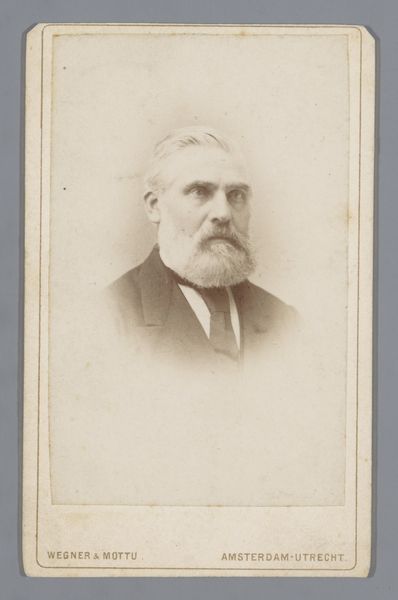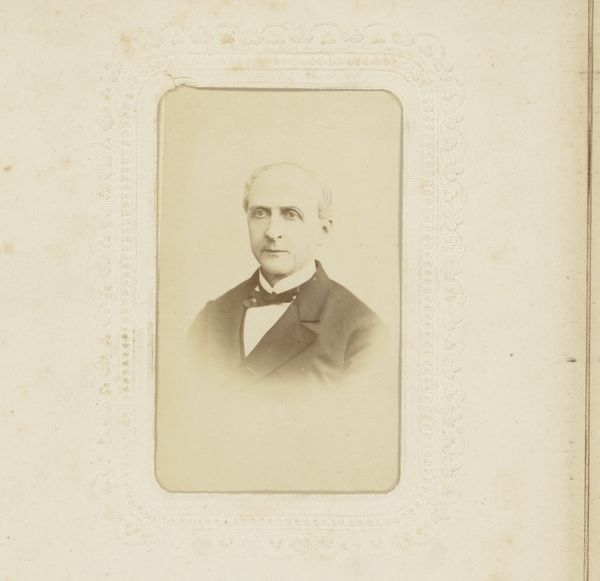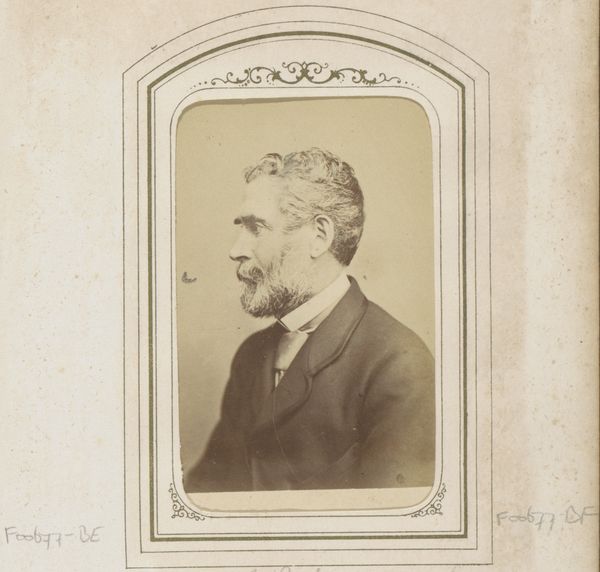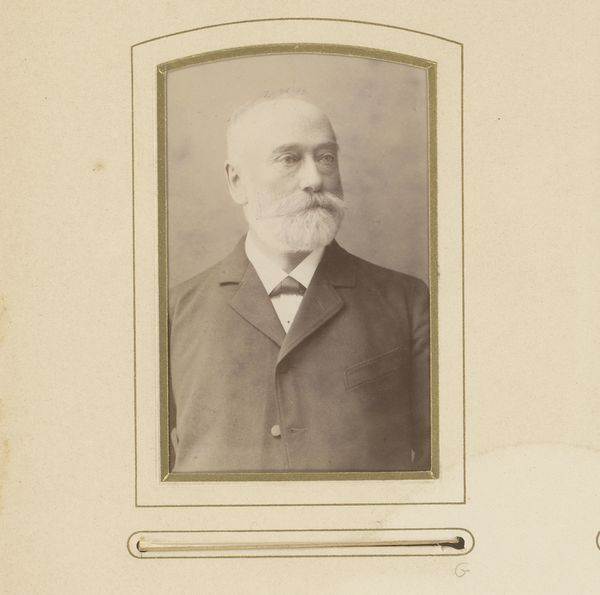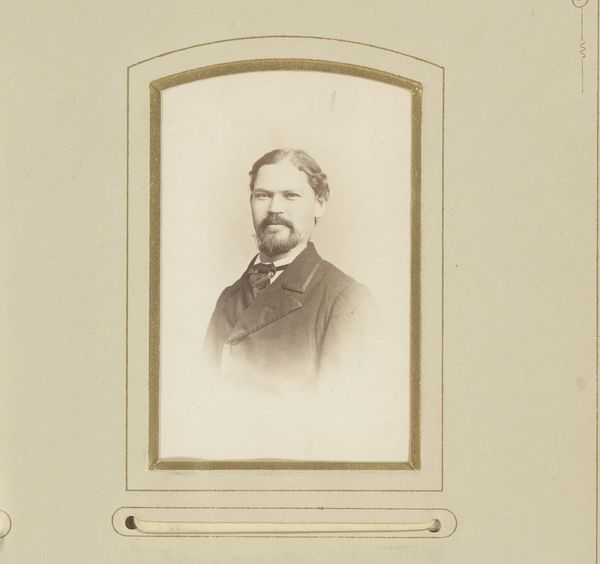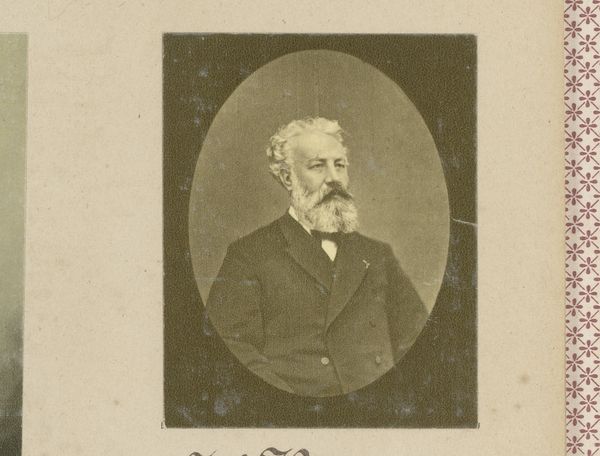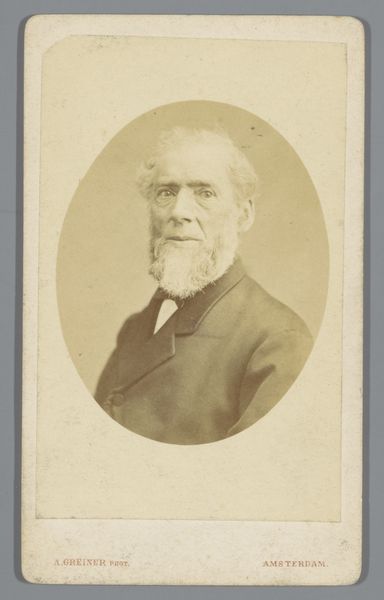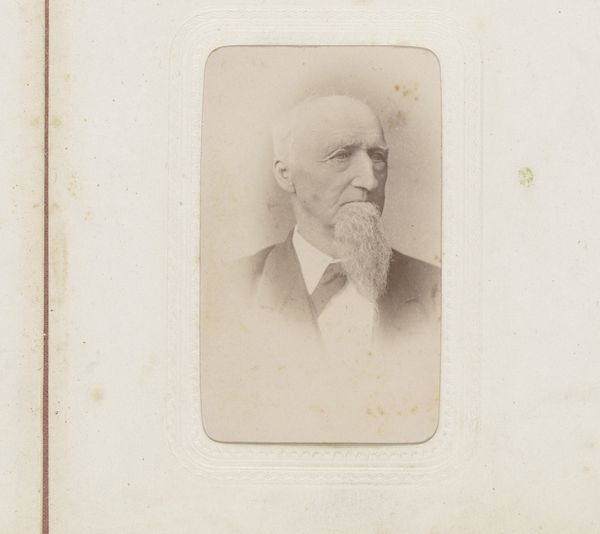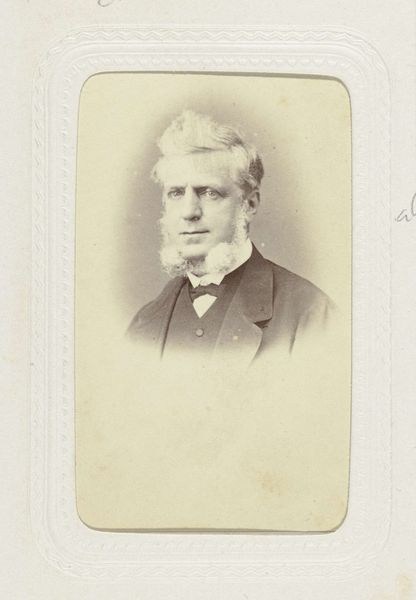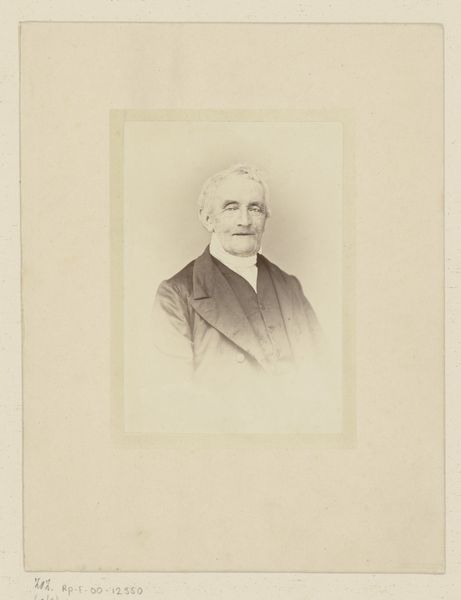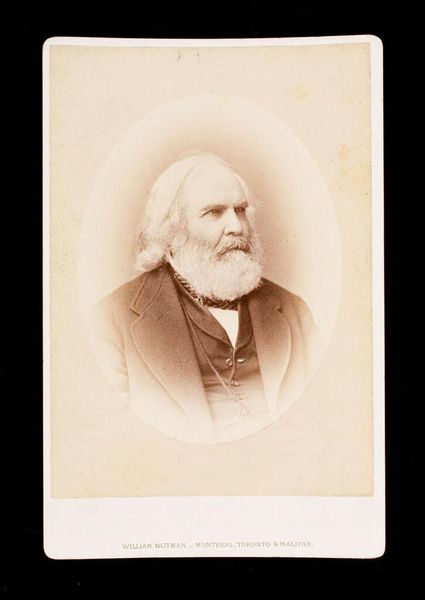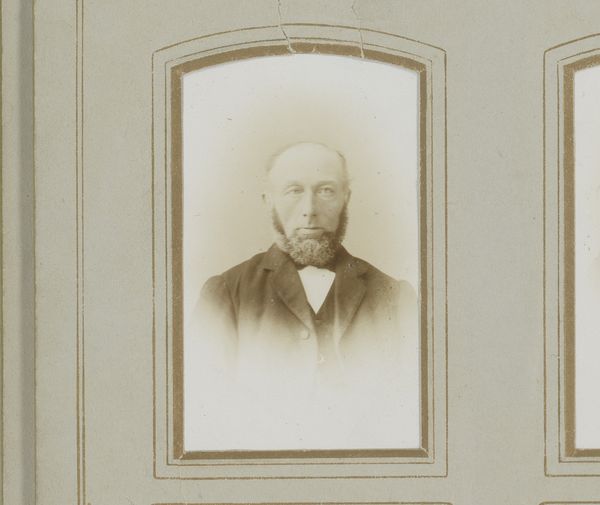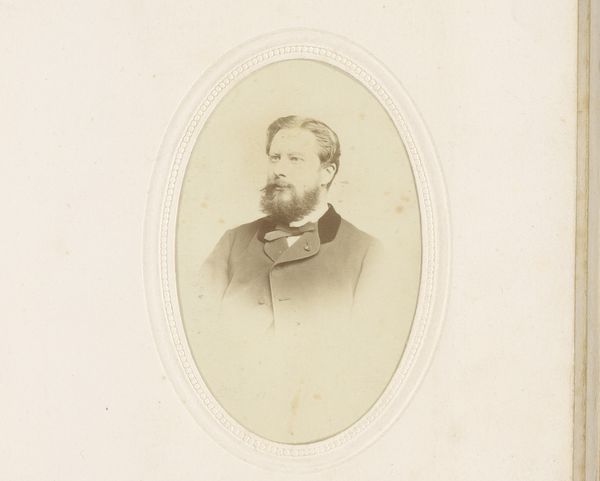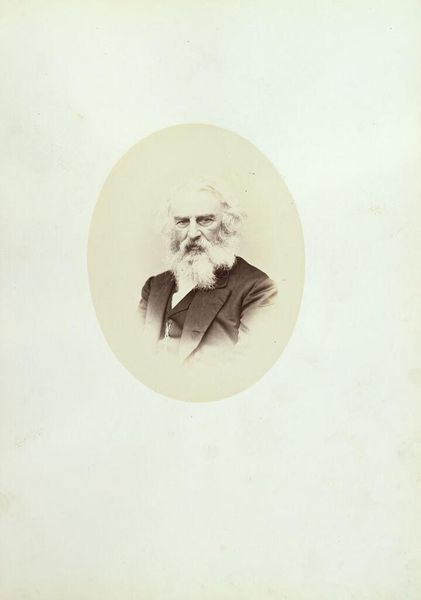
photography
#
aged paper
#
toned paper
#
photography
#
19th century
#
realism
Dimensions: height 84 mm, width 53 mm
Copyright: Rijks Museum: Open Domain
Curator: There's something intensely serene about this portrait. The subject gazes with a quiet wisdom, doesn’t he? Editor: He certainly projects that, and that comes through clearly even despite the photographic processes and conventions in play here. What we’re viewing is a photograph entitled “Portret van een man met baard”—"Portrait of a Man with a Beard"—dating from somewhere between 1850 and 1870. We know the photograph to be the work of Richard Boning. Curator: The paper’s tone really affects how we view it, doesn't it? All that gentle fading... it makes me wonder, what was his life actually like? A man of such calm... Editor: Yes, it’s the very materiality of it, the aged and toned paper as we find it now, that triggers that historical curiosity, doesn't it? Back then, photography was becoming a middle-class status symbol—a new way to document oneself for posterity. How were such images viewed at the time versus now? What did it mean to display or keep an image such as this? Curator: Exactly! I see something archetypal about him too—the wise elder. That long beard functions almost as a symbol itself, representing experience and a certain dignified gravitas. It adds layers of meaning. Editor: Indeed. We must remember that even portraits designed for the average person are shaped and mediated by various forces. Studio practices, societal expectations around posing and attire all played their roles. Photography might seem like an objective mirror, but even here in a piece of realistic presentation, we see layers of choices, of visual culture at work. Curator: The fact that he agreed to be depicted in this way is a conscious decision and this realism that we now know from photography was in that time still pretty recent and new to people, so there has been though to it, not just for him as the portrayed subject but for the artist also. I find that intriguing to see so much character portrayed. I keep looking to see what other stories are written on his face, perhaps. Editor: Well said. And through these subtle visual cues and material contexts, a humble portrait expands into a study of shifting social values and personal ambition—reflected both in his time and ours. Curator: Perhaps, art invites us into just these kinds of ongoing conversations, and what more for an object from so long ago? Editor: Precisely, providing a way to understand what values remain but also those that changed so radically!
Comments
No comments
Be the first to comment and join the conversation on the ultimate creative platform.
